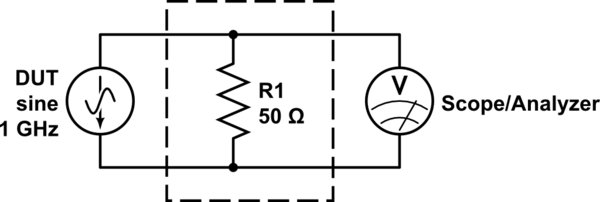While browsing some miscellaneous RF test equipment supplies I stumbled across a two-port component sold as a "feed-thru load".
Take for example the Pasternak PE6026 (datasheet), which looks physically like an attenuator (a slightly extended barrel with an "SMA male to female coaxial interface") and is rated like an attenuator (e.g "handles up to 2 Watts") but does not specify any actual attenuation (e.g. in dB) and is described instead as a "terminator" or "load":
Pasternack’s PE6026 is an RF feed-thru termination (also called RF feed-thru load) that operates from DC to 1,000 MHz and handles up to 2 Watts (CW). This feed-thru SMA load is designed to be used with test equipment, like oscilloscopes, to match the equipment to the 50 Ohm device under test (DUT).
How can something be both a "terminator" and also "feed-thru"?
